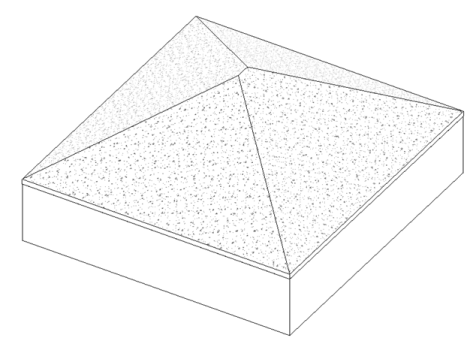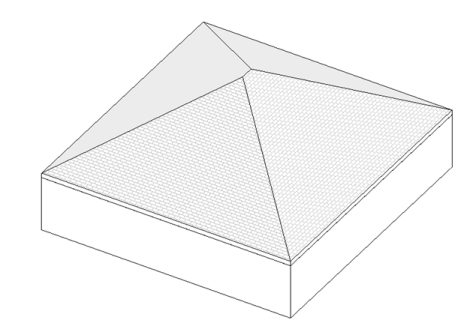Fill patterns are elements that control the appearance of surfaces. There are two types of fill patterns:
- Drafting patterns
- Model patterns
Drafting Patterns
Drafting patterns are used to represent a material itself, for example, sand, aluminum, concrete, wood, etc. Its size remains fixed relative to the sheet regardless of view scaling, and it does not rotate with the object it is applied to. Drafting patterns are meant to be representational. The picture below shows a roof filled with the "Concrete" fill pattern.

Drafting patterns can be used for applying any pattern, including material cuts.
When a drafting pattern is applied to a material cut, it becomes the subject of the Orientation attribute, which controls pattern orientation to host layers. Orientation can be one of the following types:
- Orient to view — All patterns have the same orientation.
- Keep readable — Patterns rotate with the host element; but if a pattern is slanted 45, 135, 225, or 315 degrees, the pattern flips 90 degrees.
- Align with element — Patterns align according to the host element.

Model Patterns
Model patterns are used for materials that represent an item that has length, width, and height, for example, a brick. The size of a model pattern element depends on the current view scale and the object orientation (if you use a pattern of 250mm length bricks for a 10m wall, you will have exactly 40 bricks drawn). This kind of pattern is used for filled regions and material surfaces but can not be used for material cuts.
